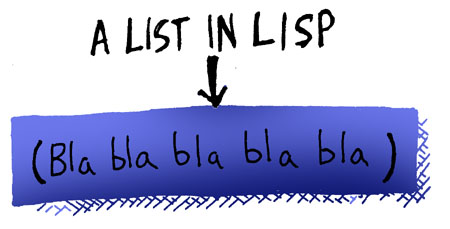|
Syntax and Semantics
|
|
Every computer language has code that is made up of syntax
and semantics. The syntax of a programming language
is the basic skeleton your program has to follow so that the Emacs
Lisp interpreter knows what's what in your program; so it can tell
what's a function, a variable, etc. The semantics of a program
are the more "random" stuff, like the different commands you have
available and what variables you're allowed to look at at any point
in the program. The first thing that is special about Lisp is that
it has the simplest syntax of any major programming language.
|
|
Basically, the Lisp syntax dictates that any text you give the Emacs
Lisp interpreter has to be arranged into lists, which can be nested
into lists of lists as deeply as needed. Parentheses are used to mark the
beginning and end of each list:
|

|
|
<< begin
< previous -
next >
end >>
|
